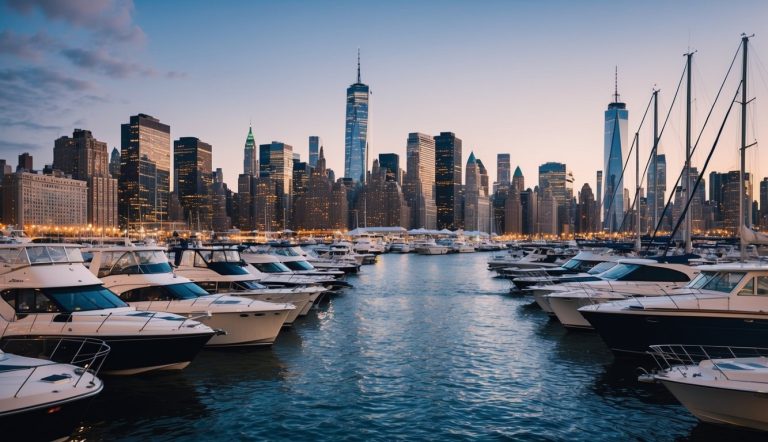New York’s waterways offer unique boating experiences that many urban dwellers don’t realize exist. The city’s rivers and harbors provide escape routes from the concrete jungle while offering stunning views of the iconic skyline. Let’s explore the world of buying boats in New York City!
Navigating Waterways: Hudson River and East River
The Hudson River and East River form the primary waterways for NYC boaters. Each offers distinct experiences and challenges you should understand before setting out.
Hudson River:
- Wider, deeper channel with stronger currents
- Heavy commercial traffic, including cargo ships
- Beautiful views of the Palisades and Manhattan‘s west side
- More predictable tidal patterns
East River:
- Narrower passages with rapid currents
- Famous landmarks like Brooklyn Bridge and Manhattan Bridge
- “Hell Gate” area requires careful navigation due to swirling currents
- More protected from ocean swells than open harbor areas
You’ll need to be aware of tide schedules when navigating either river. The East River can see current speeds up to 5 knots during peak tidal flows, while the Hudson typically ranges from 1-3 knots. Commercial traffic always has right-of-way, so plan your routes accordingly and stay alert.
Types of Boats Suitable for New York Waters
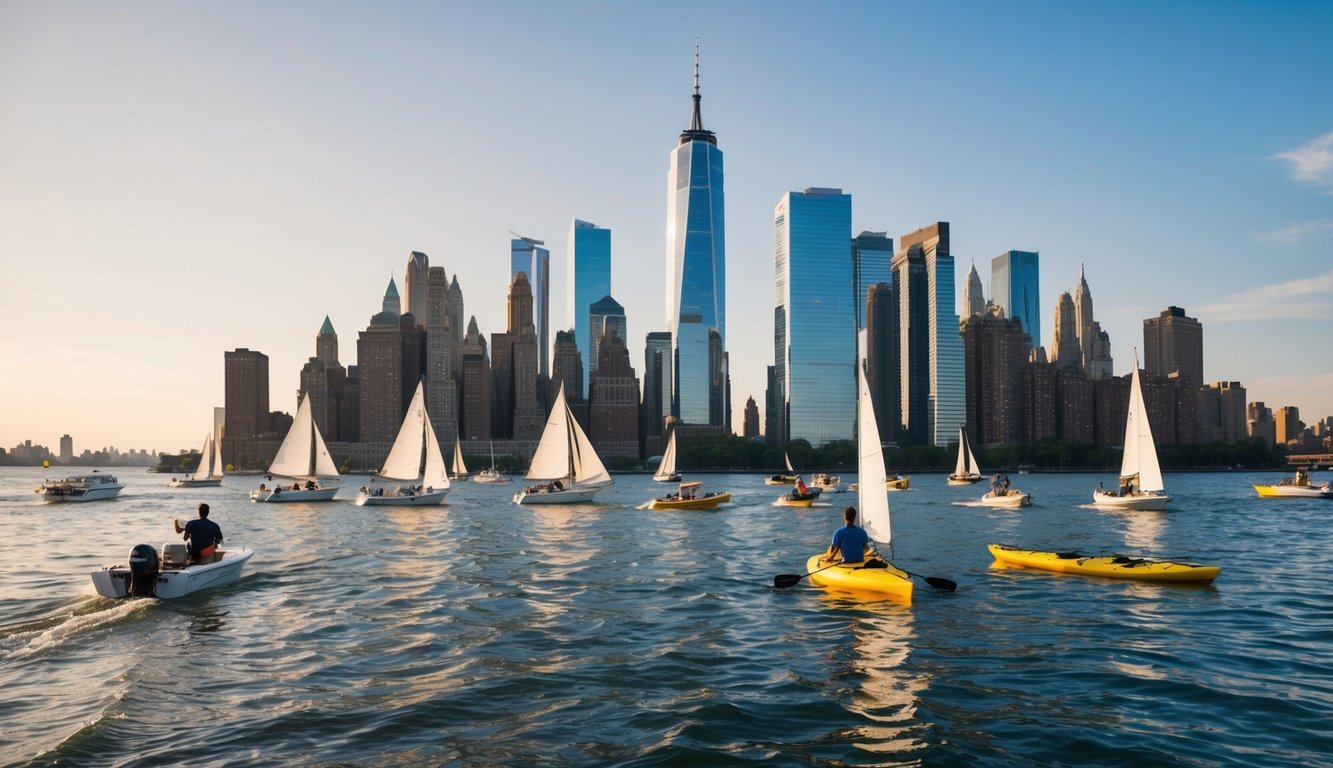
New York’s waterways demand specific boat types that can handle urban boating conditions. The right vessel will navigate Manhattan’s busy waters while offering comfort and practicality for your boating adventures.
Finding the Right Boat for Manhattan Cruising
- Center console boats are excellent choices for Manhattan waters. These versatile vessels range from 18-30 feet and provide good maneuverability in the East River’s currents. Their open design gives you 360-degree fishing access while maintaining stability.
- Pontoon boats offer a stable platform for entertaining and leisurely cruises around Manhattan. They’re perfect for evening skyline tours and can comfortably accommodate groups.
- Bowriders give you versatility for both cruising and watersports. These sleek boats typically measure 17-30 feet and handle well in the Hudson River’s varying conditions.
- For serious anglers, all-purpose fishing boats provide specialized features while maintaining comfort. Look for boats with both freshwater and saltwater capabilities since New York waters have mixed conditions.
Considerations for Size and Type of Vessels
- When boating in New York, size matters significantly. Boats between 21-26 feet hit the sweet spot for maneuverability while providing enough stability in choppy waters. Larger vessels over 30 feet offer more comfort but require greater skill to navigate urban waterways.
- People searching for boats in the NYC area often consider vessels that can handle varied trips—from Brooklyn to Jersey Shore or up to Connecticut. Your boat should be versatile enough for these journeys.
- Dual console boats provide weather protection while maintaining open space. These boats are ideal for the unpredictable weather around Manhattan’s waterways.
- Consider a boat’s draft (underwater depth) carefully. Shallower drafts work better for exploring the edges of the East River and accessing smaller docks. Most recreational boats fall into three main categories: cruising boats, fishing boats, or water sports boats depending on your primary use.
The Purchase Process
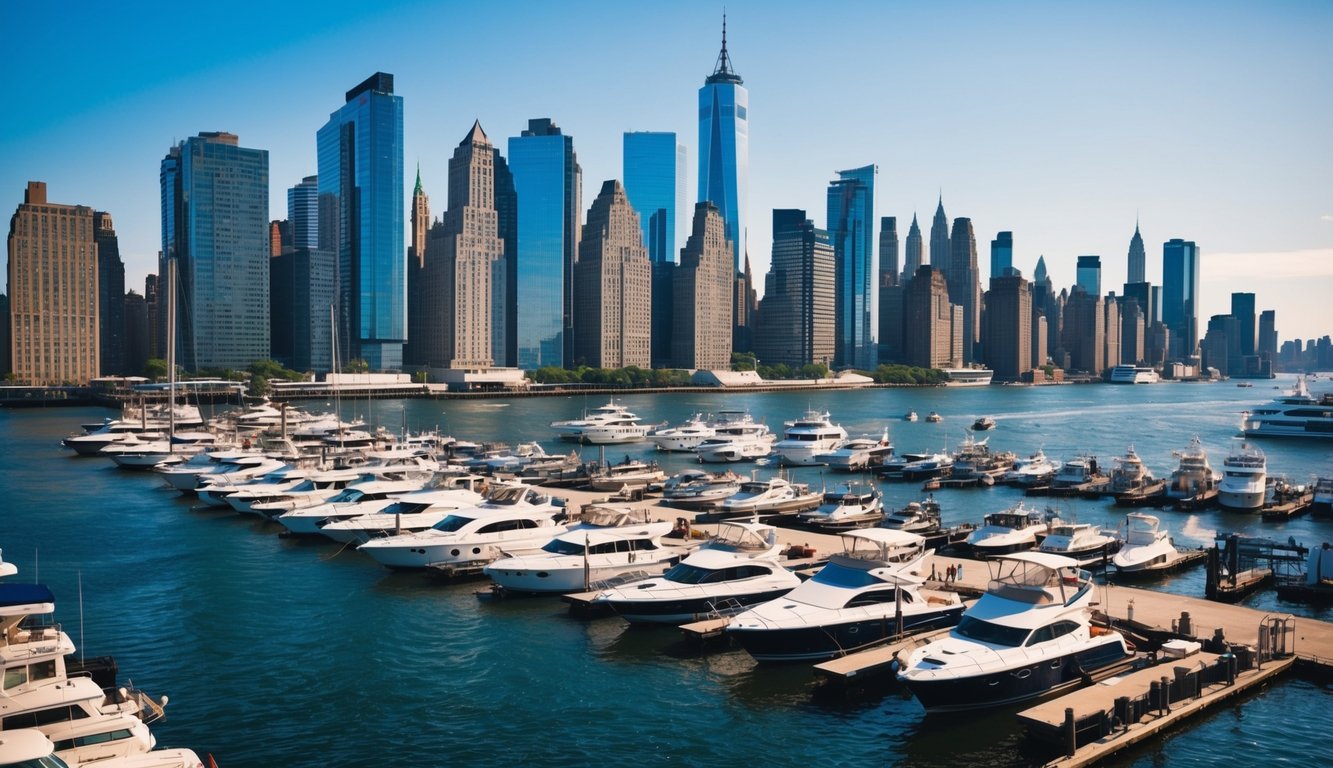
Buying a boat in New York requires navigating specific procedures, taxes, and paperwork requirements unique to the state. The process involves several key steps, from making an initial offer to finalizing ownership registration.
Steps to Buying a Boat in New York, NY
When you’re ready to purchase a boat in New York, start with a clear offer and deposit. The boat buying process typically begins with making an offer accompanied by a deposit to show your serious intent. If the seller accepts, you’ll proceed to the inspection phase. Hiring a marine surveyor is crucial before finalizing any purchase. This professional will examine the vessel for potential issues and provide a detailed report on its condition. Many buyers make their final decision based on these findings.
After a successful survey, you’ll need to:
- Sign a bill of sale
- Contact the seller’s financing bank (if applicable)
- Make payment arrangements
- Complete title transfer paperwork
For new boats, the process may include additional steps like build specifications, delivery coordination, and warranty registration.
Understanding Taxes and Fees in Boat Transactions
- New York imposes specific taxes and fees on boat purchases that you must account for in your budget. The state charges sales tax on boat purchases, currently at 4% of the sale price, with additional local taxes depending on your specific location within New York City.
- You’ll need to register your boat with the New York State Department of Motor Vehicles and pay registration fees that vary based on the vessel’s size and type. For boats over 14 feet, registration costs are higher.
- Documentation fees are another consideration when navigating the buying process. These typically include title transfer fees and processing charges that dealers or brokers may apply.
- If you’re financing your purchase, understand that lenders may require proof of insurance before finalizing the loan. Insurance costs in New York can be significant given the urban boating environment and storage considerations.
Legal Requirements and Documentation
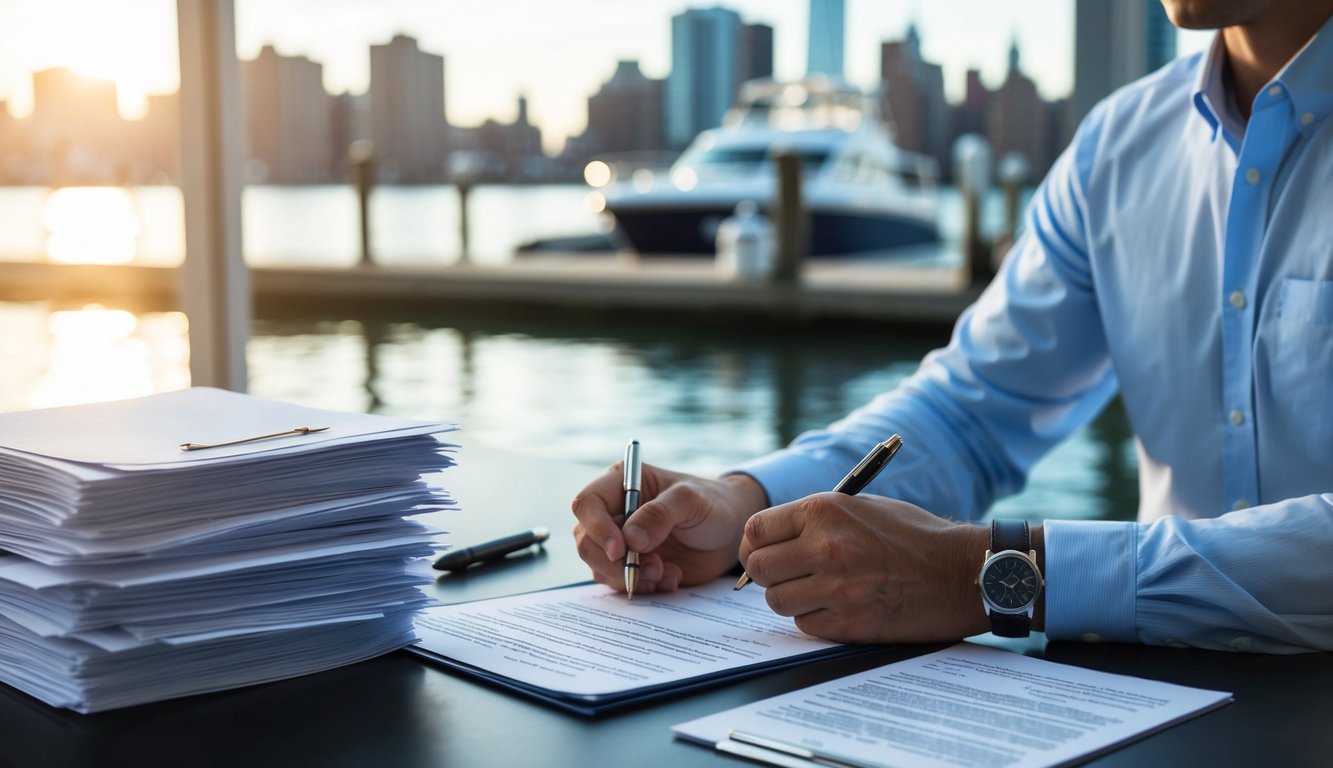
Navigating the legal aspects of boat ownership in New York requires understanding several key documents and meeting specific requirements. Following these rules helps you enjoy urban boating without legal complications.
Registration and Titling in New York State
In New York, you must register any motorized boat regardless of size. This includes electric motors and even some sailboats with auxiliary motors. Registration is handled through the DMV, where you’ll need to complete form MV-82B and provide proof of ownership. There is no age requirement to register a boat in New York, but there are age restrictions for operation. These vary based on vessel type and size.
For boats that are five net tons or more, you have the option to document your vessel with the U.S. Coast Guard instead of state registration. Many larger or more expensive boats use this federal documentation option.
Registration fees depend on the length of your boat:
- Less than 16 feet: $26.25
- 16 to 26 feet: $57.50
- Over 26 feet: $93.75
Insurance and Safety Certifications
Most marinas in New York City require proof of insurance before you can dock your boat. Typical coverage includes liability insurance of at least $300,000, though higher values are recommended for urban waterways.
You should maintain these safety certifications and equipment:
- Boater Education Certificate: While not required for operators over 18, it’s highly recommended and can reduce insurance premiums
- Fire extinguishers: Required for all motorized vessels
- Personal flotation devices: One for each person aboard
- Visual distress signals: Required for coastal waters
When buying a boat in NYC, insurance companies may require a marine survey. This professional inspection assesses your boat’s condition and value, similar to a home inspection. Many insurance providers offer discounts if you complete a vessel operator’s course that covers boat handling, engine operation, and navigation rules.
Boat Inspections and Surveys
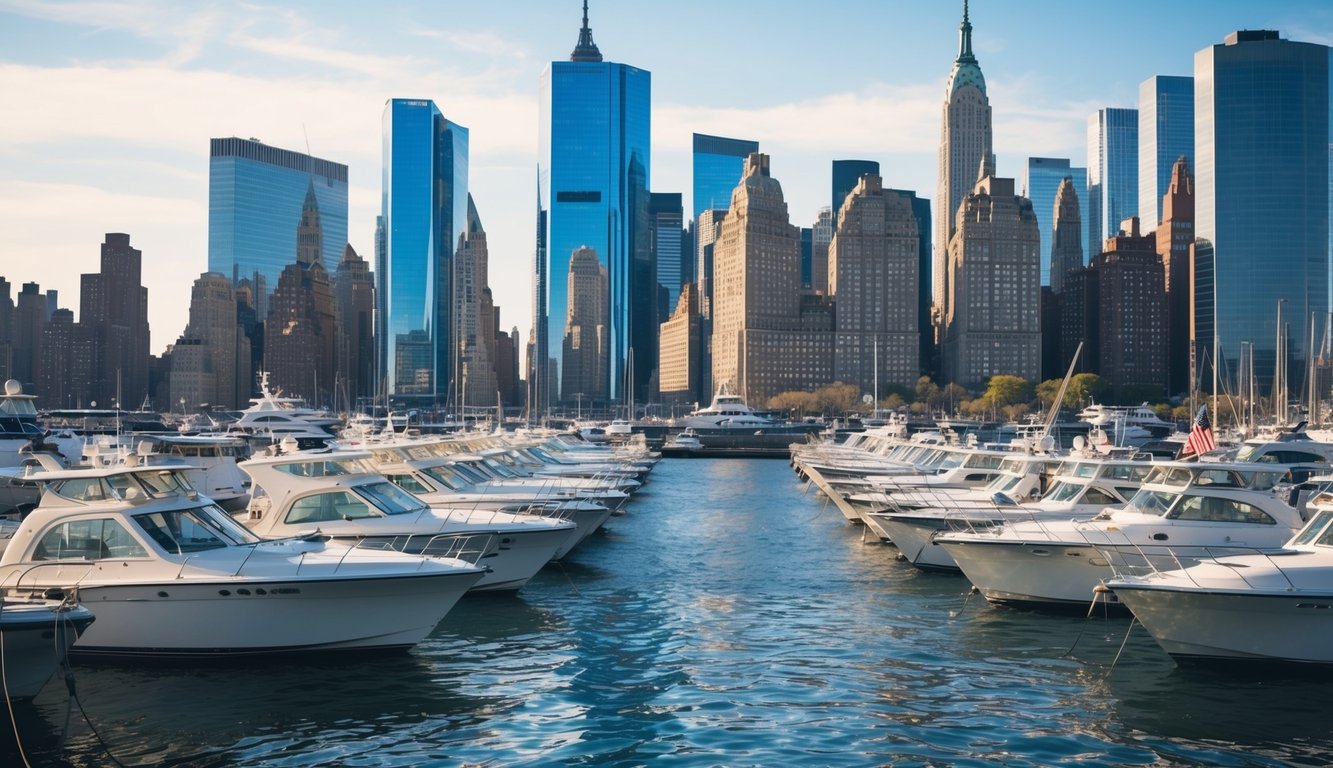
Before purchasing a boat in New York City, a proper inspection is crucial to ensure you’re making a sound investment. Professional surveys help identify potential problems and give you leverage in price negotiations.
Conducting a Thorough Vessel Inspection
Start your inspection by examining the boat’s hull for cracks, blisters, or damage. Check all mechanical systems including the engine, electrical components, and steering. Pay special attention to signs of water damage or corrosion, which are common issues in saltwater environments around NYC. Take photos of any concerning areas for later reference. Test all electronics and navigation equipment to ensure they function properly. Don’t forget to inspect safety equipment like life jackets, fire extinguishers, and flares – these must meet Coast Guard requirements.
Create a checklist before your inspection to ensure you don’t miss anything important. Include items like:
- Hull integrity
- Engine performance
- Electrical systems
- Plumbing and bilge pumps
- Navigation equipment
Hiring Professional Surveyors in NYC
- Professional marine surveyors provide expertise that goes beyond a basic inspection. Most certified surveyors in New York City offer various services including pre-purchase surveys and comprehensive vessel inspections.
- When selecting a surveyor, verify their credentials and experience with your specific type of boat. Look for membership in professional organizations like SAMS (Society of Accredited Marine Surveyors) or NAMS (National Association of Marine Surveyors).
- NYC boat owners recommend getting referrals from local marinas or yacht clubs. According to boating forums, some surveyors like Martin Marine Surveying have received positive reviews for their thoroughness and prompt service.
- The cost typically ranges from $20-30 per foot of boat length, but this investment can save you thousands in unexpected repairs. Schedule your survey at least 2-3 weeks in advance, as qualified surveyors in NYC are often booked solid during peak seasons.
Securing a Mooring or Slip
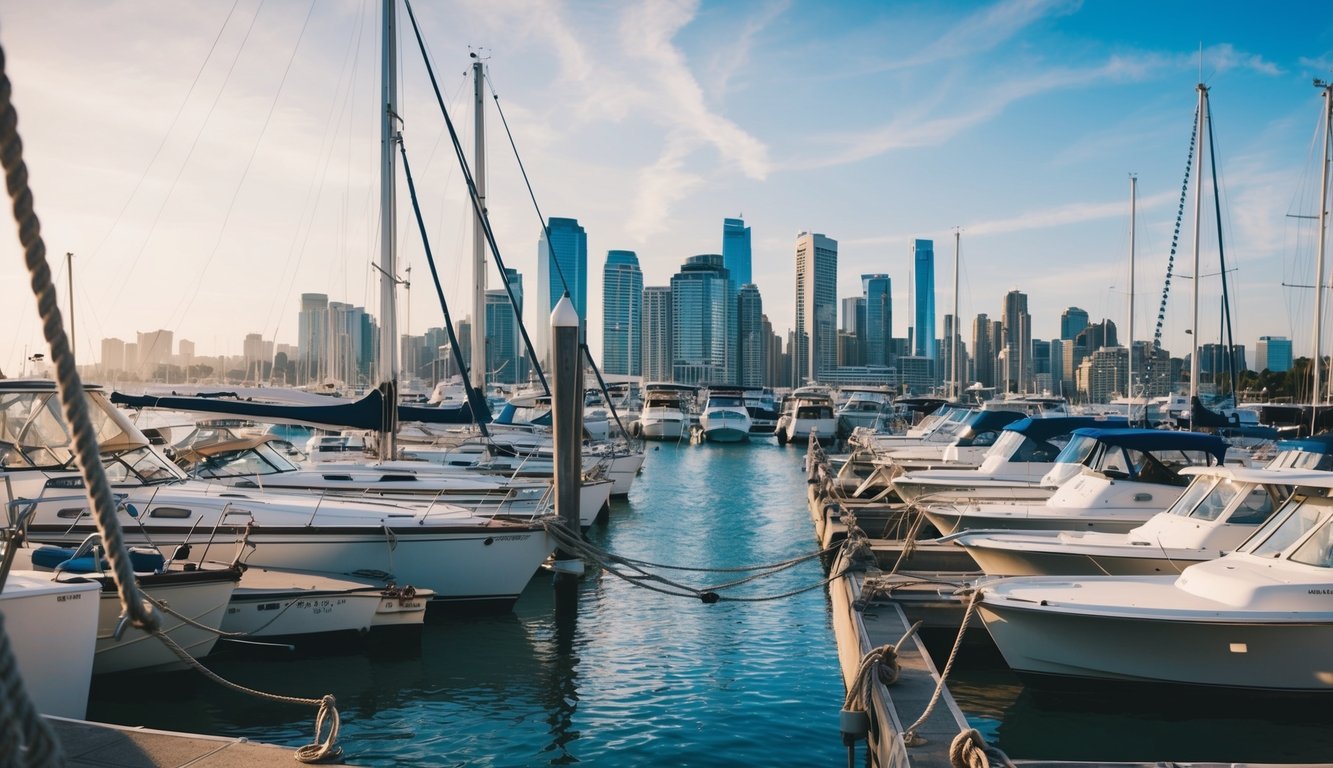
Finding a place to keep your boat in New York City requires understanding the options available and their associated costs. The right choice depends on your budget, boat size, and desired amenities.
Options for Boat Storage in New York City
- New York City offers several options for storing your vessel. Manhattan has limited but prestigious marina facilities, while the outer boroughs provide more choices. Marina options in NYC number around 20, with varying availability for different boat types.
- For a permanent solution, you can secure a slip at established marinas like 79th Street Boat Basin or North Cove Marina. These locations offer convenient access to Manhattan attractions.
- If you own a houseboat, you’ll need to follow a specific process. Finding a slip for your houseboat should be your first step before purchasing the vessel.
- When securing your boat, safety is essential. Many NYC boat owners use steel cables with locks to prevent theft, creating secure attachment points to the dock.
Comparison of Costs and Amenities
Manhattan slips command premium prices, often $200-350 per foot annually. Brooklyn and Queens marinas typically offer more competitive rates, ranging from $100-200 per foot annually.
When comparing facilities, consider these key amenities:
- Security (24-hour surveillance, gated access)
- Utilities (shore power, water connections)
- Facilities (restrooms, showers, laundry)
- Services (maintenance, fuel, pump-out)
Boat slips provide greater stability than standard docks due to their U-shape design with three sides for mooring points. This feature offers better protection during storms and rough waters. Some NYC marinas offer the option to purchase a slip rather than rent. This can be considered real estate if it includes ownership of the underwater land, potentially making it a long-term investment.
